Decoding the Athlete's Brain: When Surface Metrics Deceive
Dive with us into this lesser-explored realm, where we decode the athlete's brain, peeling away layers of surface statistics to uncover the profound truths within.
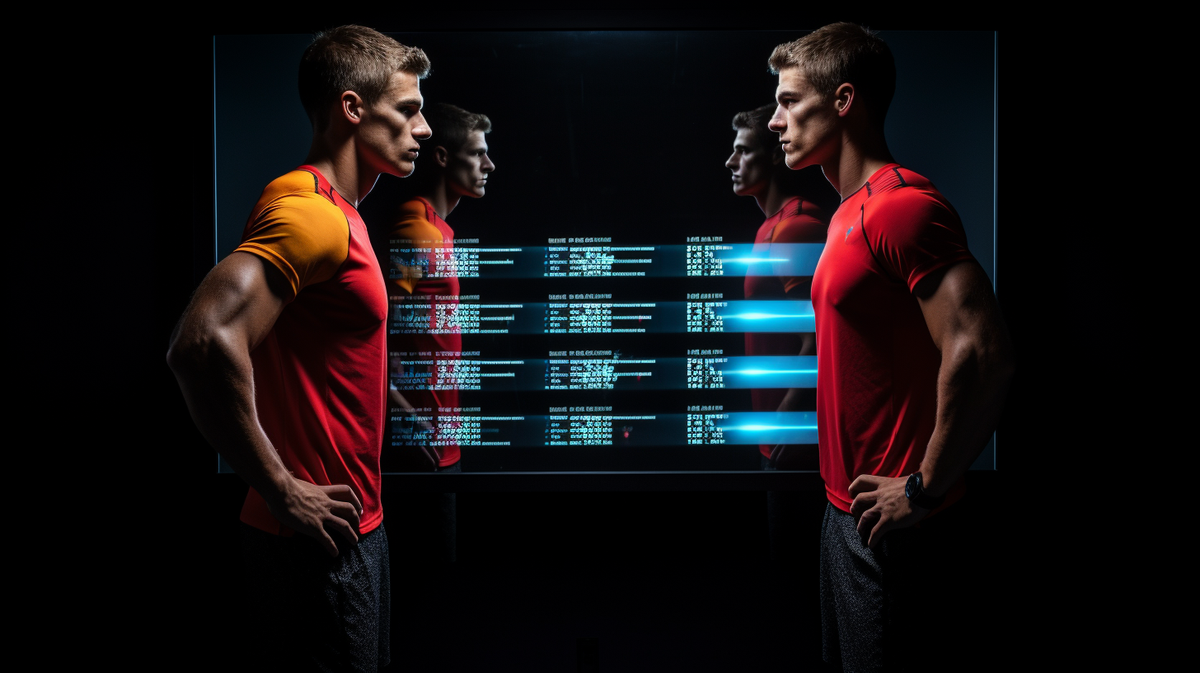
Every athlete is a symphony of muscles, tendons, and sheer determination. Beneath the physical facade, an intricate neural engine orchestrates every move and decision. For coaches and athletes, the pursuit of excellence often centers on tangible metrics - speed, distance, scores. Yet, an underlying cognitive universe, pivotal in its essence, often remains overshadowed by these surface metrics. Dive with us into this lesser-explored realm, where we decode the athlete's brain, unmasking profound truths hidden beneath surface statistics. This article presents three illuminating case studies, each shedding light on the intricacies of cognitive performance.
The Facade of Averages
Two athletes on the field seem like mirror images. Their sprint times, reaction speeds, even their accuracy seem perfectly matched. But do these surface metrics truly reflect their performance depth? Oftentimes, averages can deceive, masking the true breadth of an athlete's capabilities.
For a clearer picture before moving on, both athletes in the graph below had an average reaction time of 450ms. But does this mean their performances were truly identical? Let’s dig deeper.
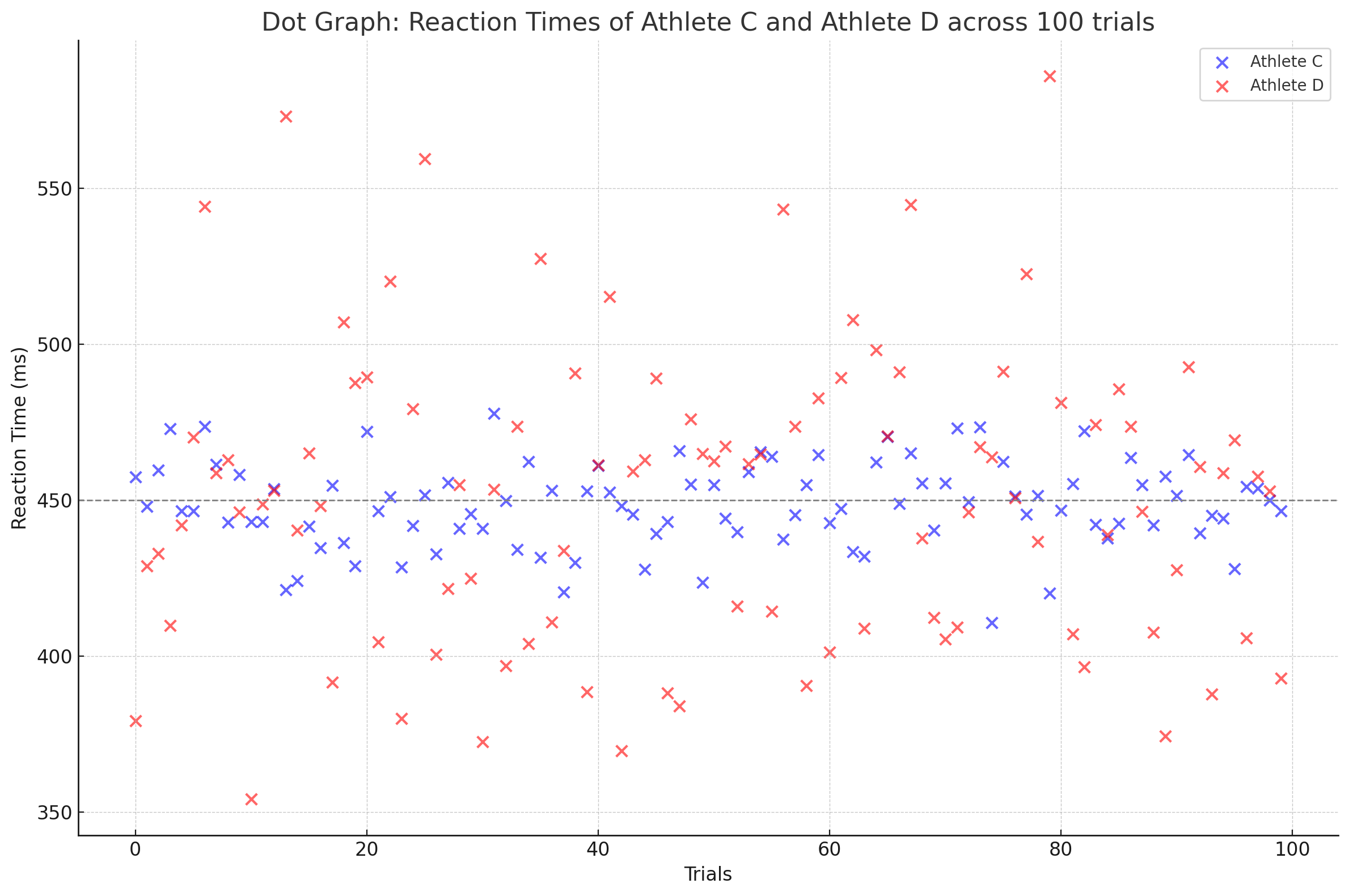
Case Study 1: Peeling Back the Layers of Surface Metrics
Every sprint, every shot, is the climax of countless cognitive processes working in harmony. In this study, we delve into Athlete A and Athlete B's neural dynamics, seeking subtleties that conventional metrics might miss. Over 10 minutes, both athletes undertook a series of cognitive tasks, revealing not just their raw performance but the endurance and consistency of their cognitive performance.
Reaction Time: The Underlying Story
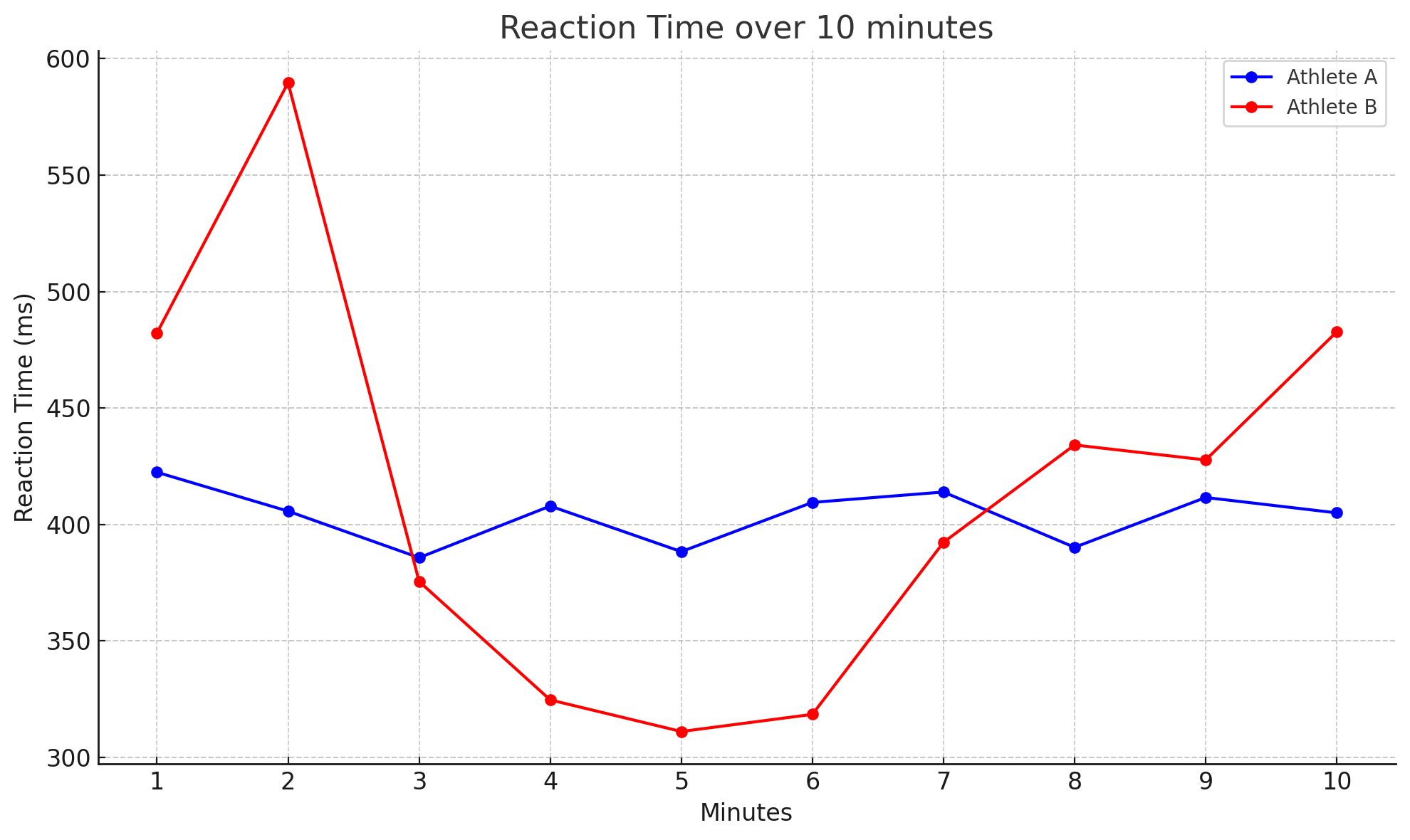
At the onset, both athletes seem to exhibit similar reaction times. However, a closer inspection over a span of 10 minutes reveals stark contrasts. While Athlete A's reaction times remain consistent with minimal variations, Athlete B's times show significant fluctuations, deviating considerably from the mean.
Variation: Consistency is Key
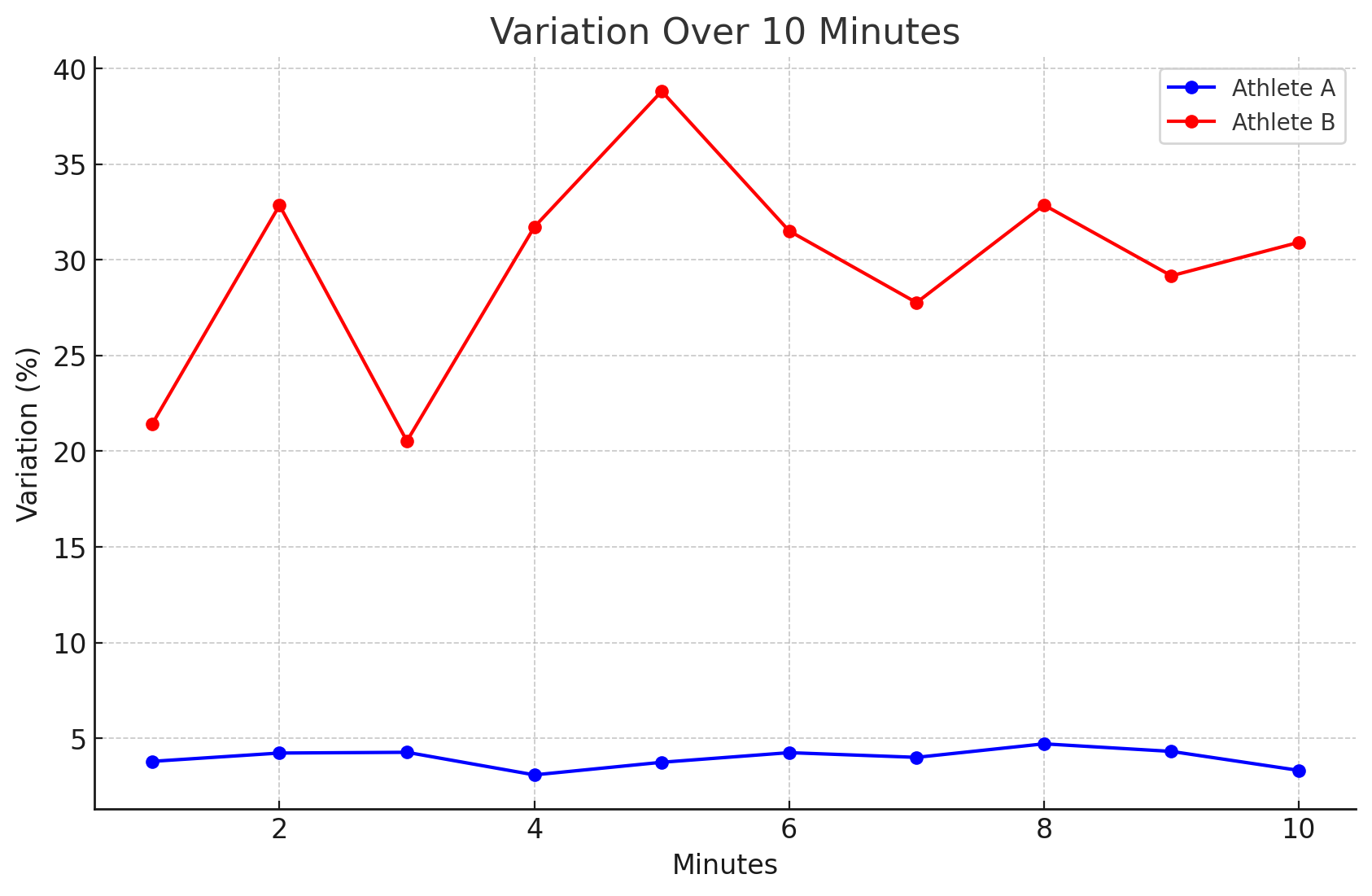
Variation is where the consistency of an athlete's performance shines or falters. Athlete A's performance graph is a testament to their steady performance, with variations remaining within a tight 3-5% range. Conversely, Athlete B's graph depicts a roller-coaster, oscillating wildly between 20-40%.
Accuracy: Beyond the Bullseye

Accuracy is more than just hitting the mark; it's about consistently doing so. Over the 10-minute mark, Athlete A remains unerringly precise, with a stellar 97% accuracy. In contrast, Athlete B, while starting strong, shows a discernible decline in precision as time progresses.
rMSSD: A Glimpse into Recovery and Stress
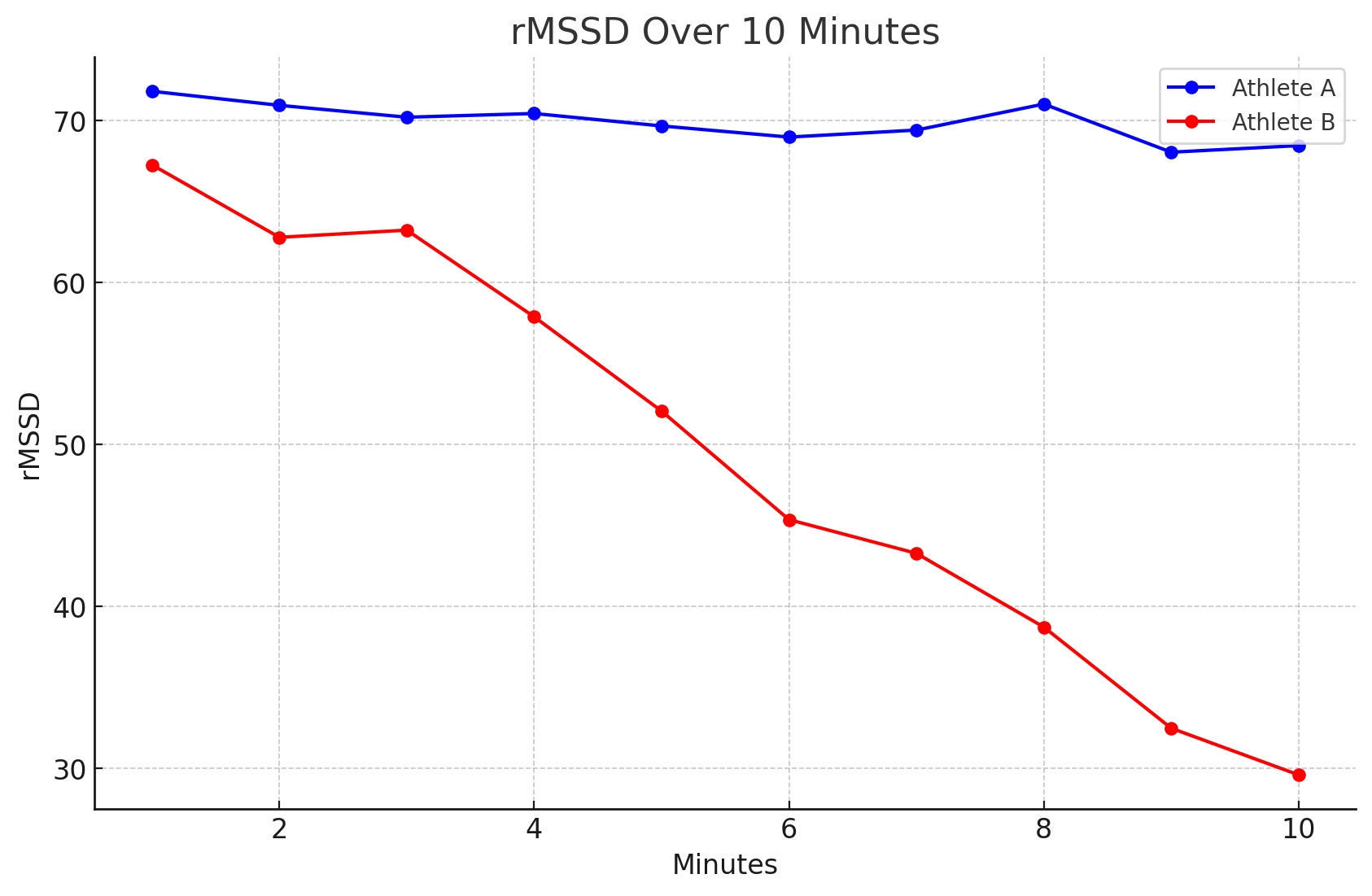
rMSSD, a measure of heart rate variability, offers insights into an athlete's stress and recovery levels. A consistent rMSSD suggests optimal stress management. Throughout the task, Athlete A showcases stability, whereas Athlete B's declining rMSSD indicates potential stress or fatigue issues.
Concluding Insights from Case Study 1
While Athlete A emerges as a beacon of consistent performance, Athlete B's results indicate underlying challenges. Their significant variations suggest potential cognitive fatigue or inefficiencies. For Athlete B, strategies like lowering task intensity, shortening task duration, and emphasizing regular, short training sessions could be beneficial.
Case Study 2: The Convergence of Physical and Cognitive Training
Concurrent cognitive training is not just an emerging trend—it's a transformative shift in sports science. Athlete C and Athlete D embraced this innovative approach, integrating cognitive tasks during their cardiovascular workouts. This dual challenge fine-tunes both physical endurance and cognitive resilience.
Reaction Time: While Athlete C's reaction times remained relatively consistent, Athlete D showcased a noticeable fluctuation, reflecting the challenges of maintaining cognitive performance under physical strain.
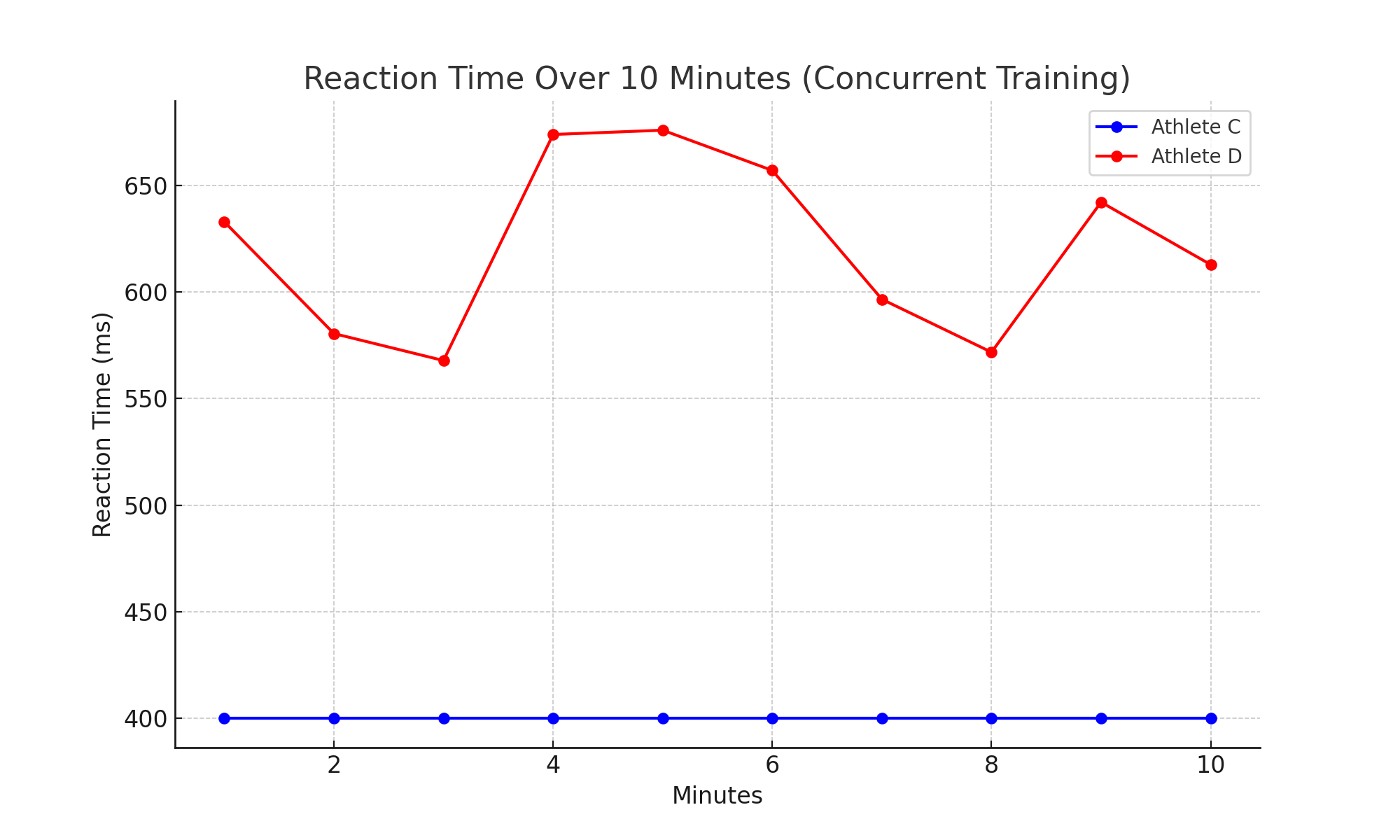
Variation: Athlete C's performance graph portrays minimal variation, signifying consistency even under the dual pressures of concurrent training. Athlete D, on the other hand, experienced significant variations, with the data oscillating dramatically.
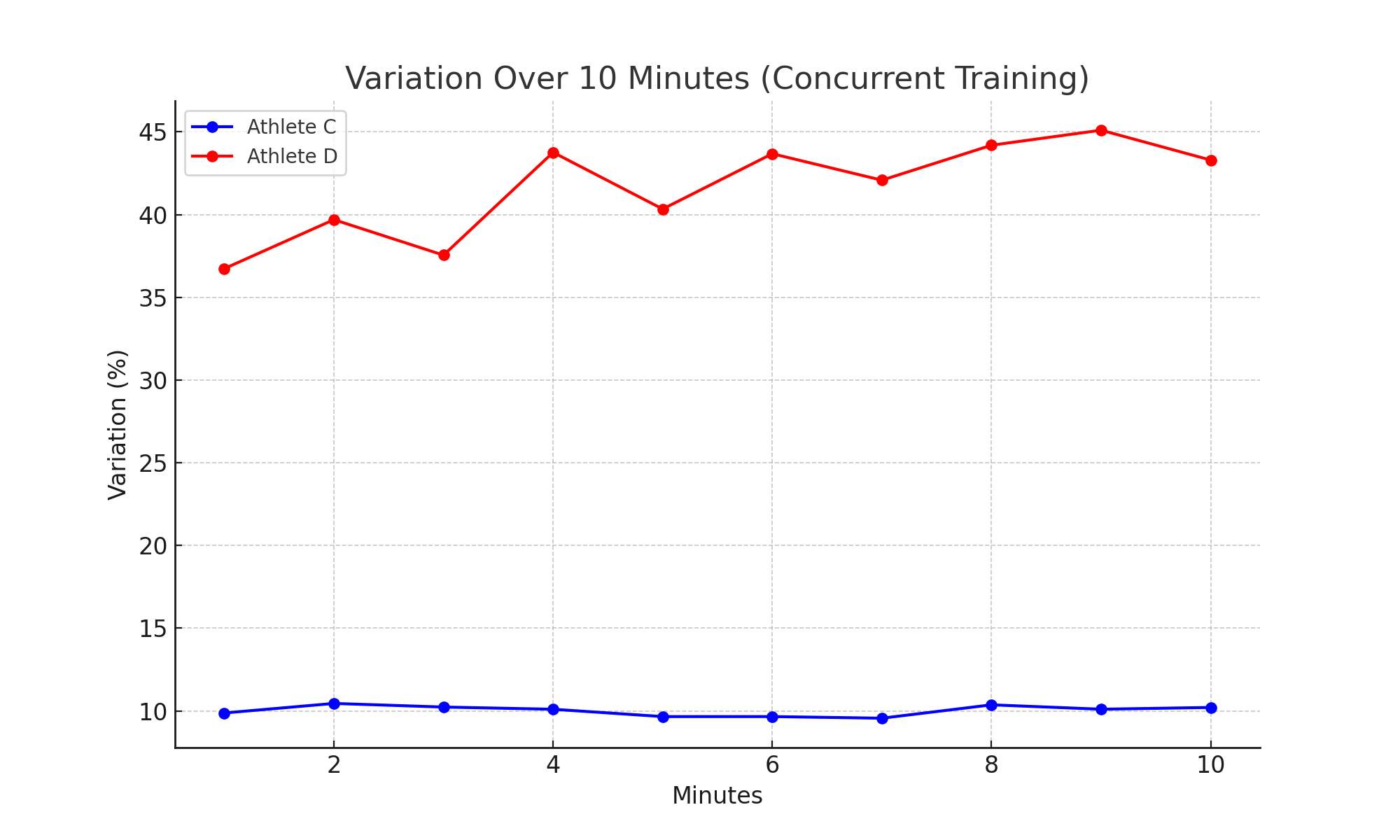
Accuracy: Accuracy forms the backbone of cognitive performance during concurrent training. Athlete C demonstrated a consistent accuracy level, whereas Athlete D's accuracy showed a wave-like pattern, fluctuating between 40% and 60%.
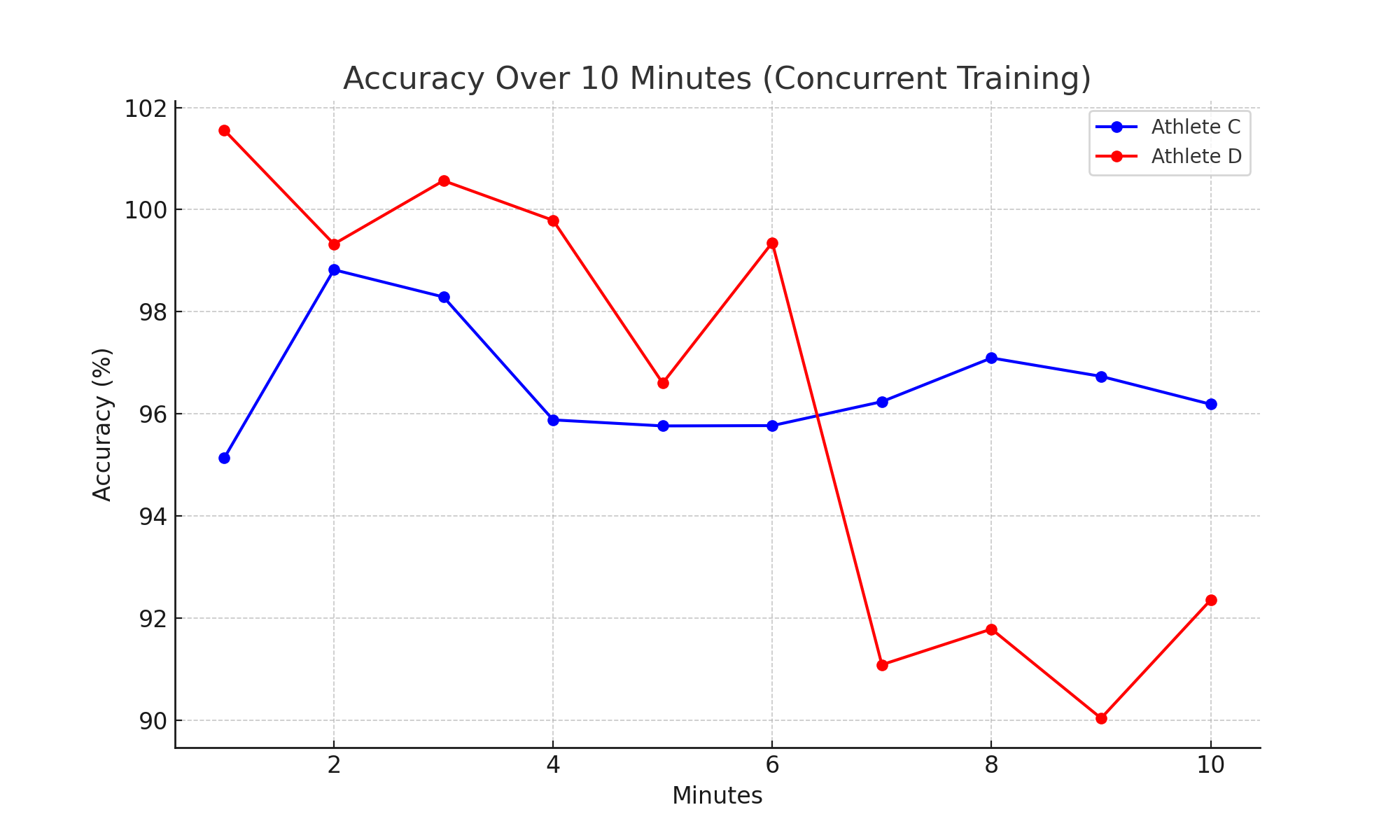
rMSSD: A measure of heart rate variability, rMSSD provides insight into an athlete's stress and recovery during training. Athlete C's stable rMSSD signifies optimal stress management, whereas Athlete D's declining rMSSD indicates potential challenges in managing cognitive and physiological stress during the session.
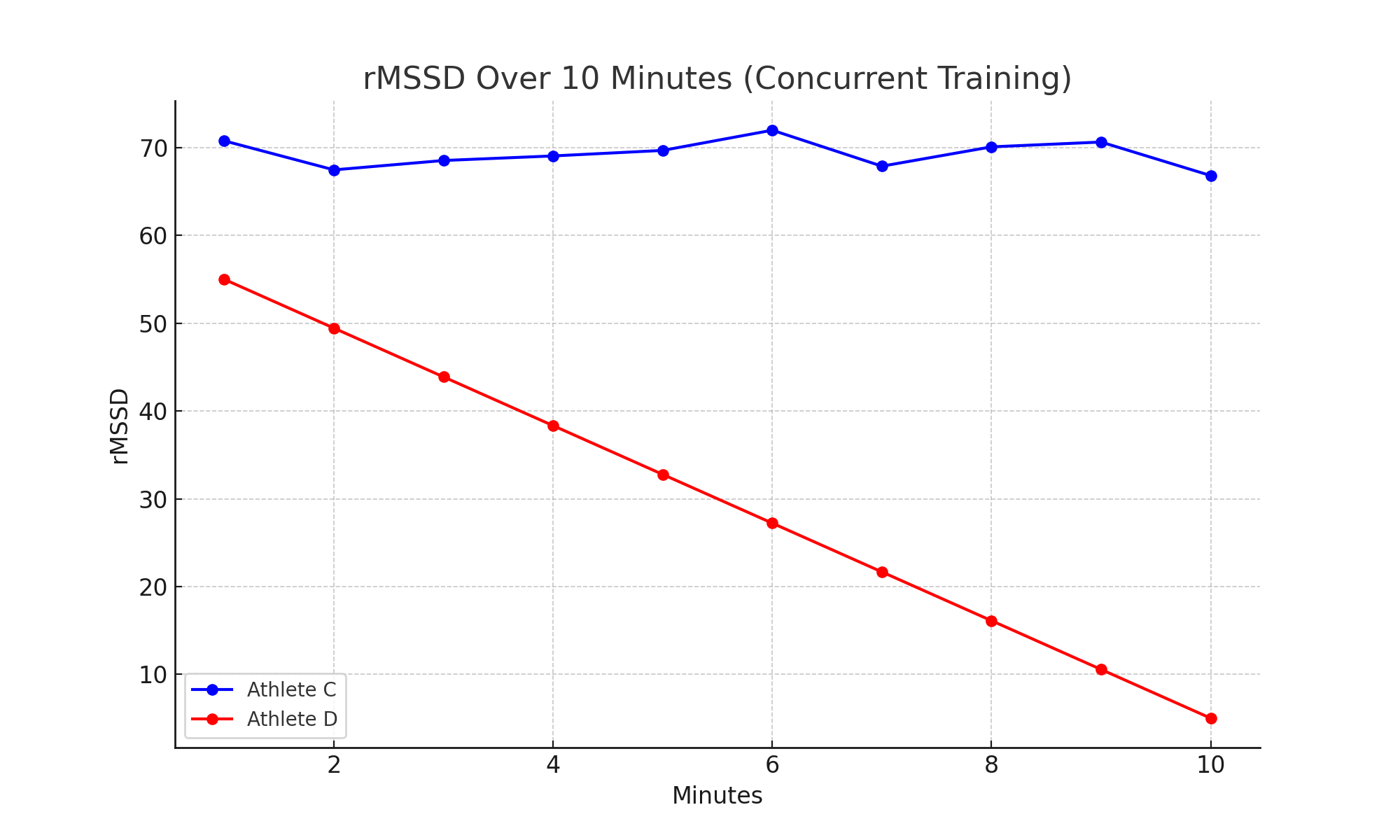
Deciphering the Impacts of Concurrent Cognitive Training
Concurrent training offers a window into the harmony between an athlete's physical stamina and cognitive performance. Athlete C's journey showcases the potential of this training when executed with precision. In contrast, Athlete D's results underscore the importance of individualized approaches for maximizing benefits.
Case Study 3: When Strength Training Meets Cognitive Challenges
The fusion of cognitive tasks with physical training signifies an athletic revolution. Athlete C and Athlete D embarked on this journey, interweaving cognitive drills with their strength training sets. This dual challenge provides a unique lens into cognitive and physical performance.
Reaction Time: A Balance of Muscle and Mind
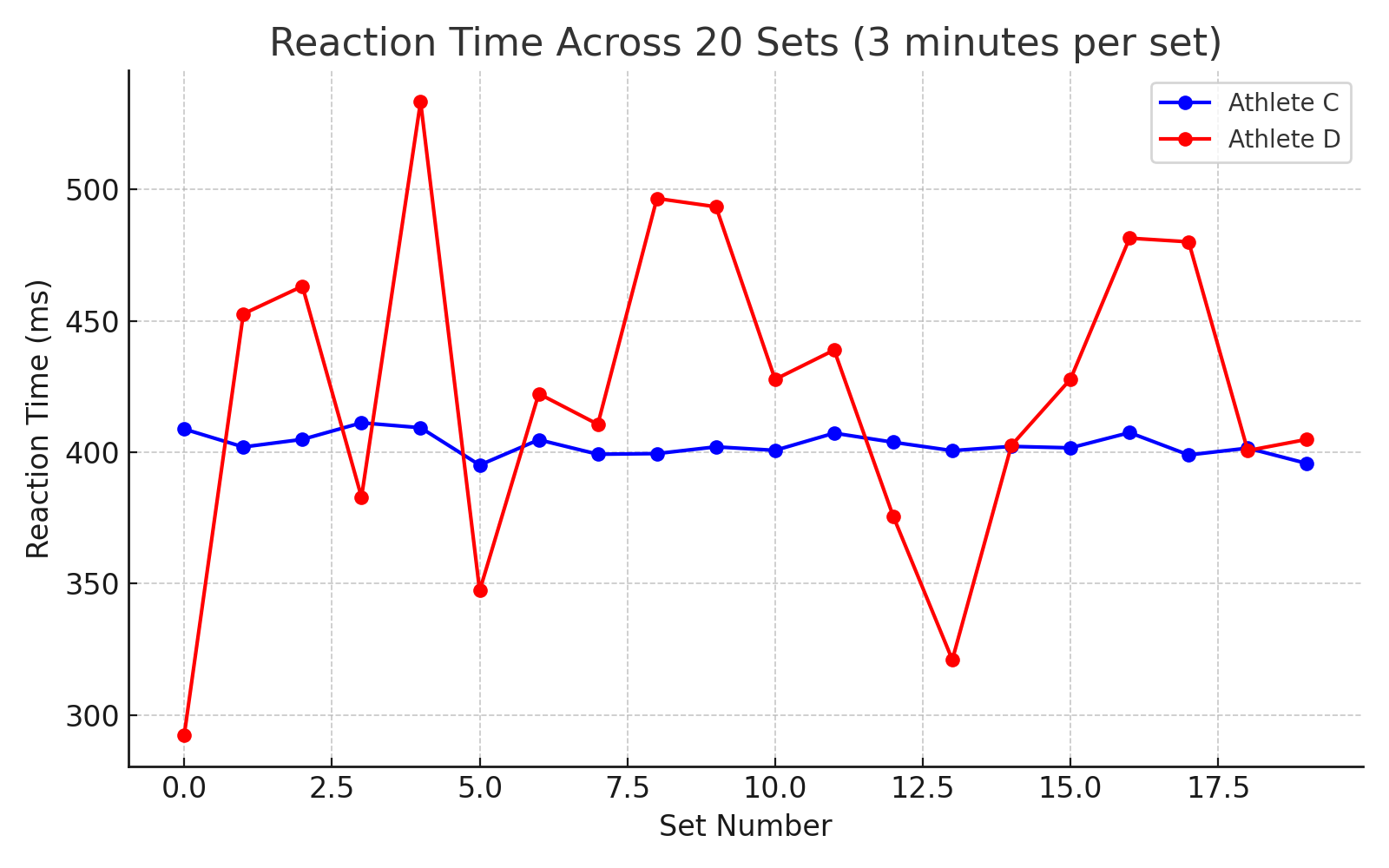
While Athlete C maintained a steady reaction time with only minor undulations, Athlete D grappled with pronounced shifts, indicative of their struggle to balance strength with speed.
Accuracy: Maintaining the Mark
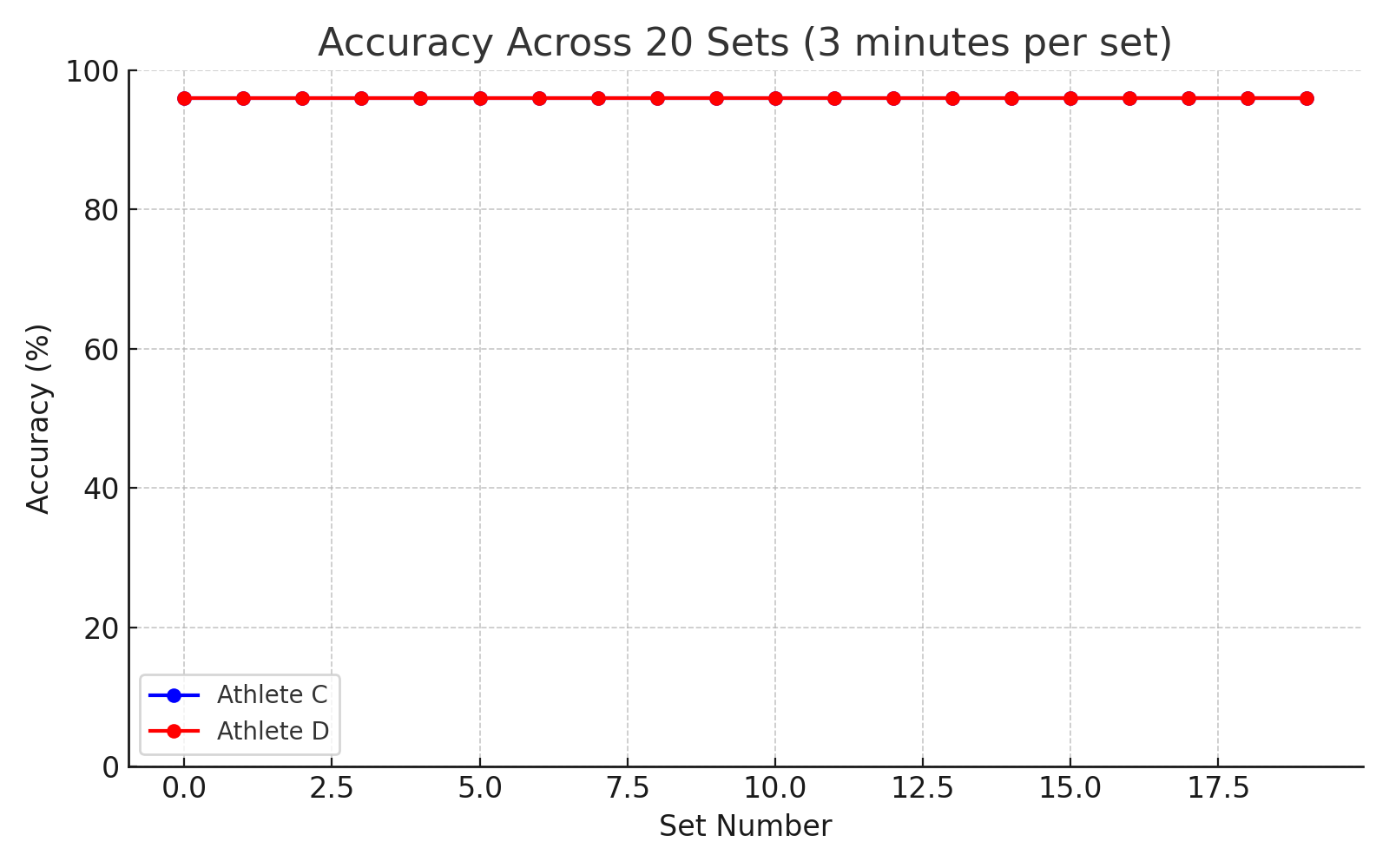
Both athletes, regardless of their muscle strain, shone brightly with an unwavering accuracy level hovering around 96%. This highlights their tenacity to keep their cognitive sharpness intact amidst physical exertion.
Variation: Navigating the Waves of Consistency
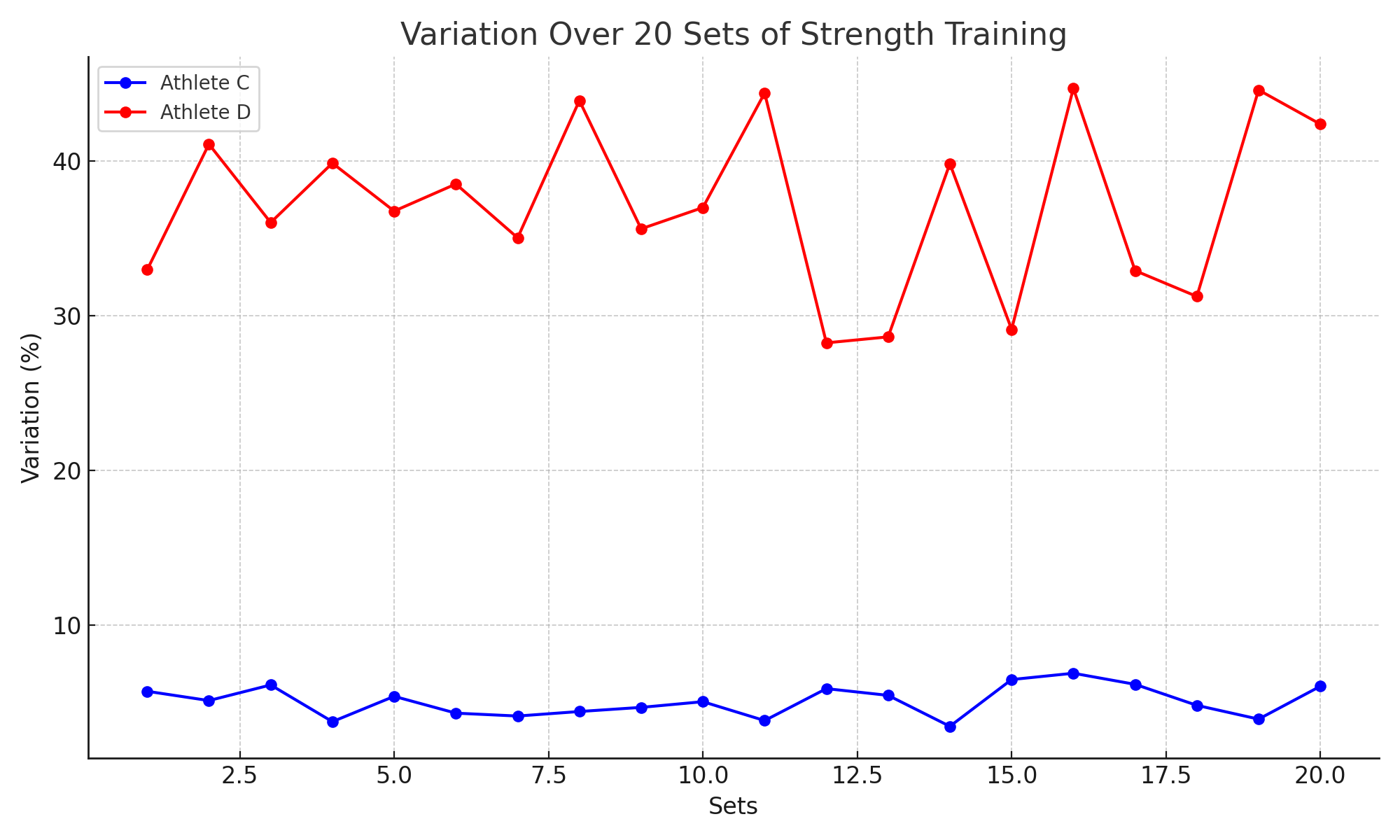
Athlete C's journey was smooth sailing with variations anchored closely around 10%. However, Athlete D faced choppier waters, with variations making pronounced leaps between 30% and 40%.
rMSSD: The Pulse of Poise
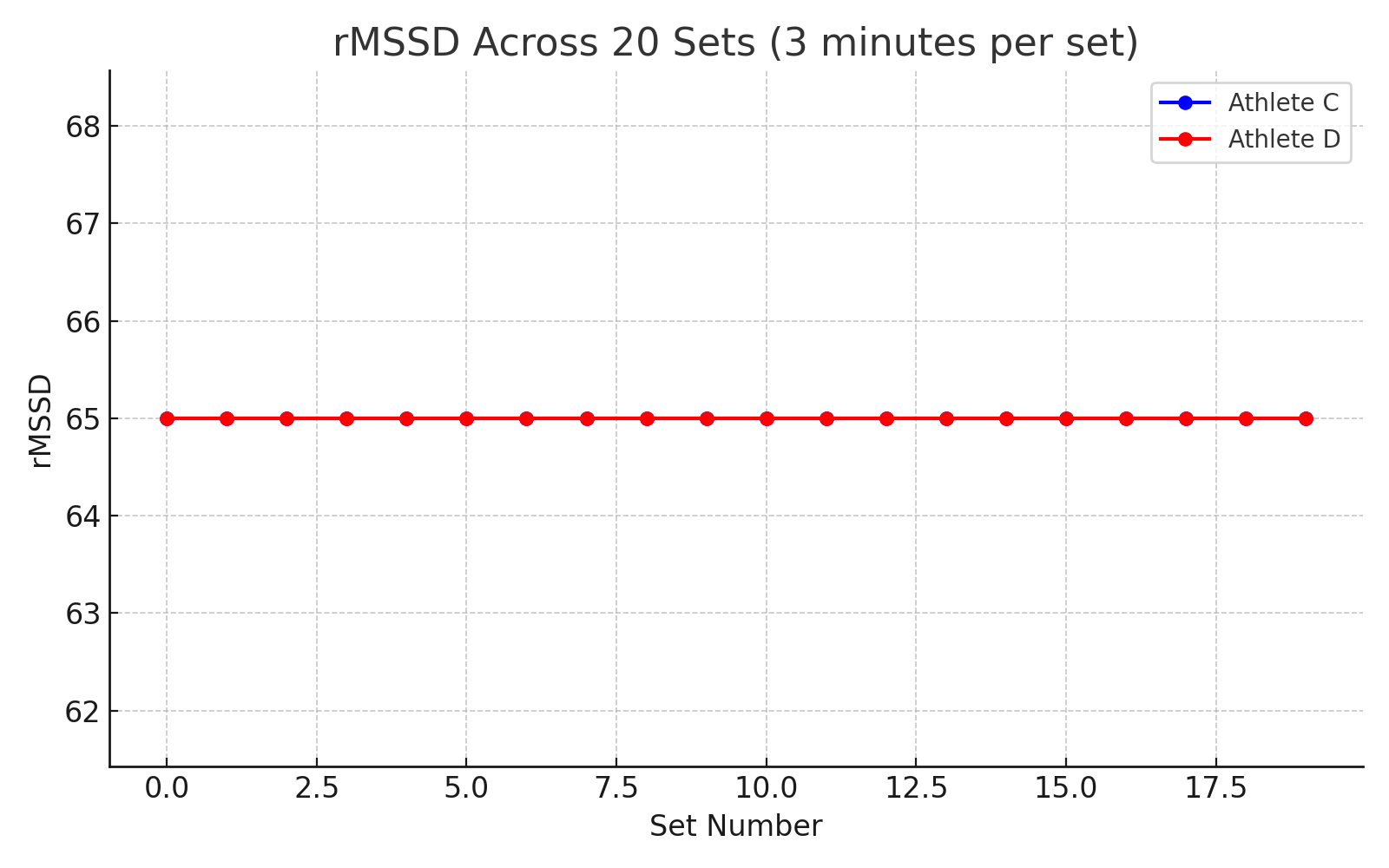
The rhythmic beat of both athletes' rMSSD remained consistent, underscoring their adeptness in managing physiological stress while navigating the dual challenge.
Concluding Insights for Case Study 3
Blending cognitive tasks with strength training offers a 360-degree view of an athlete's capabilities. Athlete C and Athlete D both showcased commendable cognitive resilience. However, the contrasts between their reaction times and variations emphasize the need for bespoke training strategies. Shorter cognitive tasks and dedicated post-training sessions can refine and amplify an athlete's cognitive strength.
The world of athletics is not just a physical arena.
Beneath the sweat and muscle lies an intricate web of neural pathways, orchestrating every dash, leap, and decision. Traditional training focuses intently on the tangible — the speeds, distances, and scores. Yet, lurking beneath these metrics is a cognitive realm, a dimension equally critical to an athlete's success but often overlooked.
In this article, we've delved into cognitive performance through three distinct case studies. These narratives unravelled the often hidden intricacies of cognitive performance, emphasizing the importance of looking beyond the surface.
- The Deceptive Nature of Averages: We discovered that two athletes, seemingly identical in their sports performance, might have vast cognitive disparities lurking beneath.
- The Power of Concurrent Training: Embracing both physical and cognitive challenges simultaneously can enhance both endurance and resilience. However, this approach necessitates precision and individualized strategies to truly harness its benefits.
- Strength Training and Cognitive Challenges: The fusion of cognitive tasks with traditional strength training underscored the importance of a holistic training approach. It's not just about building muscle but also about sharpening the mind.
The symphony of success plays not just on the fields and tracks but also in the intricate neural pathways of the brain. This is a new era of cognitive training.
🌐 Connect With Us
🌍 Soma Technologies: Engineered to enhance human performance.
📸 Instagram: Dive into our world through exclusive photos and stories.
👥 Facebook: Join our community for the latest updates and discussions.
📈 LinkedIn: Connect with us professionally and stay informed about industry news.
🎥 YouTube: Watch our latest videos, tutorials.
🐦 X: Follow us for instant updates, news, and engaging tweets.
